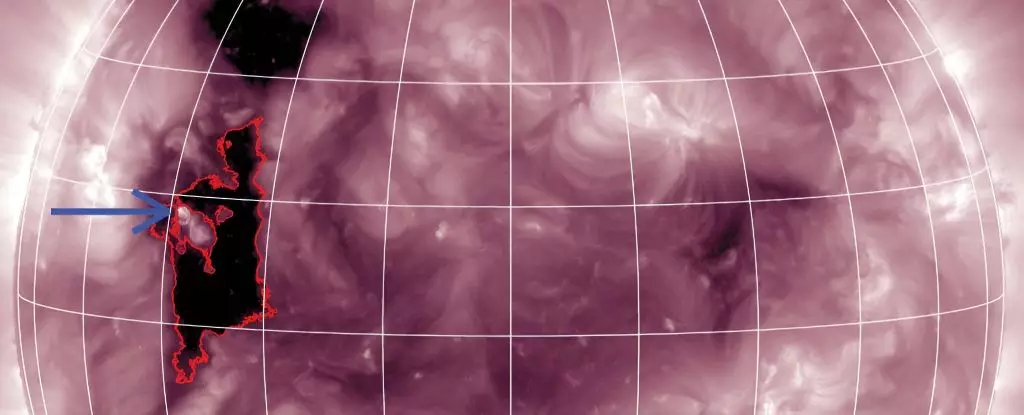In late October 2023, astronomers made headlines when they identified an extraordinary phenomenon emanating from the Sun—an unexpected jet of helium-3 shooting forth at unprecedented levels. This incredible event has sparked new interest in the study of solar physics and the complex processes that govern our closest star. The helium-3 isotope, which is exceptionally rare compared to its more common sibling, helium-4, has prompted scientists to re-evaluate their understanding of solar emissions. The sheer volume of helium-3 released during this solar event not only defies predictions but also poses intriguing questions about the Sun’s behavior and the materials present in its atmosphere.
The Nature of Helium Isotopes
To fully appreciate the significance of this occurrence, it’s vital to understand the relationship between helium-3 and helium-4. Helium-4 comprises the majority of helium found in the universe, accounting for approximately 25% of the total normal matter in the cosmos. In stark contrast, helium-3 is around 0.002% of the solar wind. Given its relative scarcity, helium-3 is often seen as a cosmic curiosity, and its presence can unveil critical insights into the processes unfolding in the solar atmosphere. What makes helium-3 particularly fascinating is its lighter atomic structure, characterized by the presence of just one neutron less than helium-4. This unique composition may influence how it is accelerated during solar particle events, marking it as a key player in our understanding of solar dynamics.
Tracing the Source: A Coronal Hole’s Role
The source of this remarkable helium-3 eruption was traced back to a coronal hole—a temporary area where the Sun’s magnetic field is weak and allows for the freer escape of solar particles. The recent event occurred during a time when solar observatories, including those operated by ESA and NASA, reported observations of an expansive coronal hole on the Sun’s surface. These regions, which cannot be viewed in regular visible light but are visible in ultraviolet and X-ray spectra, represent a cooler and less dense part of the solar corona, thus enabling a rapid outflow of solar wind.
In this instance, a solar jet—a highly collimated outflow of plasma—was identified as the specific mechanism behind the helium-3 release. Radoslav Bučík, an astrophysicist involved in the study, noted that the magnetic field strength in this area was surprisingly weak. This reduced magnetic intensity could be crucial in explaining why such extreme levels of helium-3 were released, aligning with theories which propose that weaker magnetic regions may assist in boosting helium-3, allowing the isotope to reach high velocities.
The Chemical Composition Mystery
Perhaps even more intriguing is the chemical composition of the solar particle event that brought this helium-3 to our attention. In typical solar particle events, a range of heavier elements like neon and iron is released along with helium isotopes. However, the October 2023 event presented an unusual profile, with iron levels remaining consistent and a rather unexpected abundance of lighter elements such as carbon, nitrogen, silicon, and sulfur. This deviation from the norm raises questions about the nature of the solar materials being expelled during what could be a rare but significant event.
The potential implications of this unique proliferation of lighter elements cannot be overstated; it may point to underlying mechanisms that have yet to be fully understood. Though comparisons to previous events suggest that only a handful share similar characteristics, researchers are left pondering whether such occurrences are truly infrequent or if they are more common, cloaked by their moderate intensity and simply overlooked due to observational constraints.
The Solar Orbiter: A Pioneering Tool
The Solar Orbiter spacecraft, positioned strategically between Earth and the Sun, has become a critical asset in capturing and analyzing solar phenomena. With its ability to gather detailed data from various perspectives, the Solar Orbiter provides astronomers with an unparalleled opportunity to observe the Sun’s mysterious outbursts and gather insights into the mechanisms at play. By enhancing our understanding of these explosive solar jets, scientists can glean important information about the Sun’s behavior, further illuminating the dynamics of our solar system.
The unexpected abundance of helium-3 in the October 2023 solar event serves as a profound reminder of the complexity of the universe. With each discovery, the extensive tapestry of interactions between celestial bodies reveals more of its intricacies. Our exploration into the cosmos often leads to questions that eclipse the answers we find, pushing the boundaries of our understanding further and deeper into the realm of possibility.


Leave a Reply